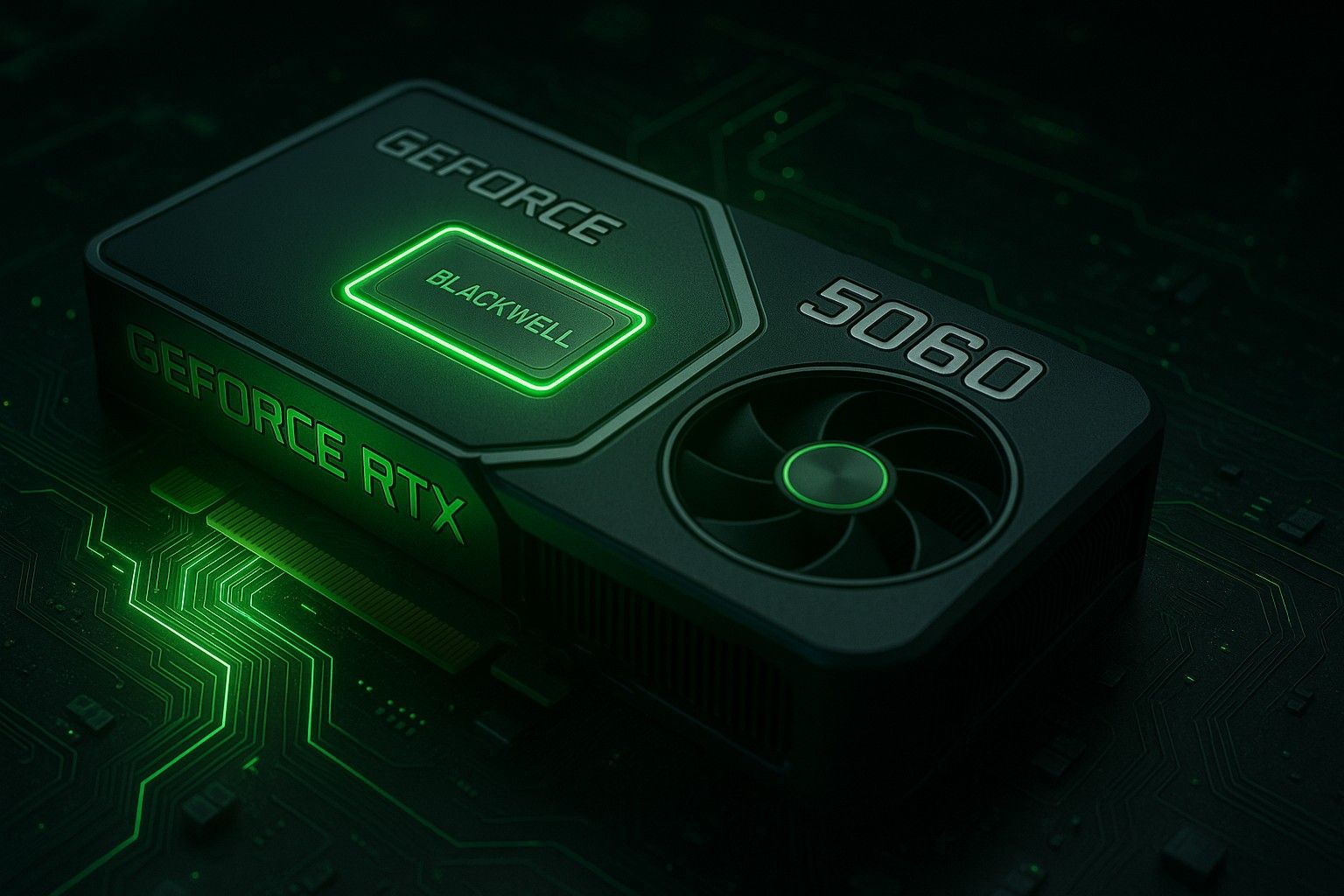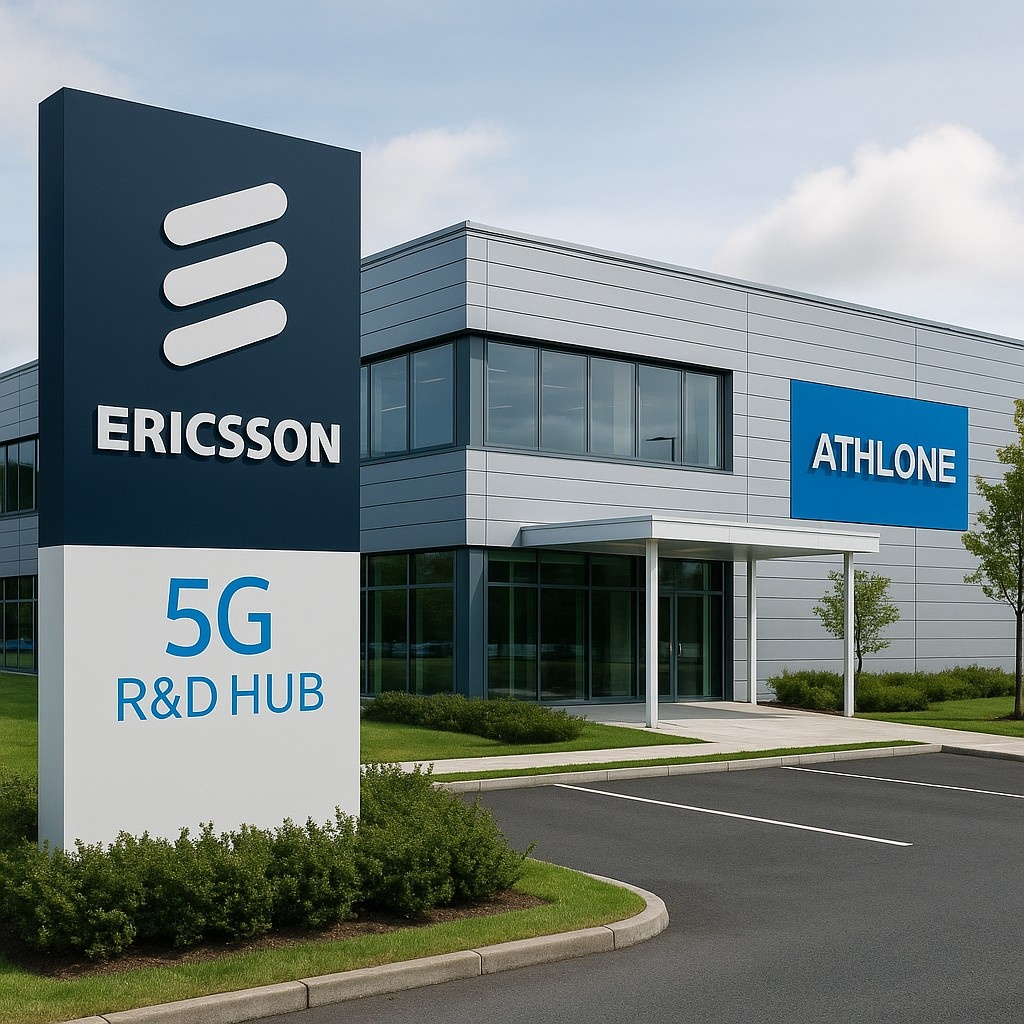NVIDIA Launches GeForce RTX 5060: Blackwell-Powered GPU Brings Next-Gen Performance to Mainstream Gamers
In a long-anticipated move that could shape the future of PC gaming for the mainstream market, NVIDIA has officially unveiled the GeForce RTX 5060, the first mid-range GPU in its new Blackwell-powered 50-series lineup. Designed to deliver next-generation gaming performance at a more accessible price point, the RTX 5060 brings several architectural improvements and AI-driven features previously reserved for high-end graphics cards.
Announced via a global livestream and backed by hands-on demos at Computex 2025, the new card is being hailed as a major upgrade for budget-conscious gamers and creators alike. The RTX 5060 marks the company’s first major attempt to bring the Blackwell GPU architecture — first seen in NVIDIA’s enterprise and datacenter chips — into the consumer gaming ecosystem.
“We’re bringing Blackwell to everyone. With the RTX 5060, we’ve redefined what mainstream graphics means in 2025 — more AI, more performance, more value.”
– Justin Walker, VP of GeForce at NVIDIA
GeForce RTX 5060 GPUs power your favorite games at 100+ frames per second - powered by the NVIDIA Blackwell architecture and enhanced by revolutionary DLSS 4 technologies
— NVIDIA GeForce (@NVIDIAGeForce) May 20, 2025
Learn More: https://t.co/PahK1yKbPD pic.twitter.com/QgyhnFUO9J
The Blackwell Architecture: What It Means for Gamers
Named after mathematician and statistician David Blackwell, the Blackwell architecture is NVIDIA’s latest innovation in GPU design, succeeding the Ada Lovelace architecture that powered the 40-series.
With Blackwell, NVIDIA focuses on more than just raw raster performance. It emphasizes:
- AI-enhanced rendering pipelines
- Better ray tracing efficiency
- Improved energy efficiency
- Advanced tensor core optimizations for DLSS and neural graphics
Core Enhancements in Blackwell:
- Up to 2x the ray tracing throughput per watt
- Fourth-gen Tensor Cores for accelerated AI workloads
- Support for DLSS 4 and NVIDIA’s new Neural Texture Compression
- Enhanced Shader Execution Reordering (SER) for more efficient workload distribution
The RTX 5060 is the first GPU in the sub-$350 range to offer this advanced feature set, bringing next-gen rendering fidelity to budget builds.
GeForce RTX 5060: Specifications and Performance
NVIDIA’s goal with the RTX 5060 is clear: deliver solid 1080p and 1440p gaming with ray tracing and AI upscaling enabled, while keeping thermals and power requirements friendly for smaller rigs and laptops.
Key Specifications:
- GPU Architecture: Blackwell
- CUDA Cores: ~4608
- Boost Clock: ~2.6 GHz
- VRAM: 8 GB GDDR7 (128-bit)
- Ray Tracing Cores: 3rd-gen (Blackwell specific generation)
- Tensor Cores: 4th-gen
- TDP: ~130W
- Interface: PCIe Gen 5
NVIDIA claims that the RTX 5060 delivers:
- 1.8x better ray tracing performance than the RTX 4060
- Up to 2.2x frame rate boost in supported titles using DLSS 4 with Frame Generation
- 40% lower power consumption at peak loads versus previous gen
In side-by-side benchmarks shown at the event, Cyberpunk 2077 at 1440p with DLSS 4 and ray tracing enabled hit an average of 72 FPS on the RTX 5060 — compared to just 38 FPS on the RTX 4060 without frame generation.
“It felt like a card from a much higher tier. This is the kind of uplift mainstream gamers have been waiting for.”
– Lin Zhang, a gaming journalist who tested early builds at Computex
Pricing and Availability
The GeForce RTX 5060 will be available starting June 20, 2025, with a starting MSRP of $329. Custom models from AIB partners like ASUS, MSI, Gigabyte, and Zotac will follow, offering factory overclocks and dual/triple-fan designs.
A lower-powered RTX 5060M variant for laptops is expected in Q3 2025, focused on thin-and-light gaming laptops and AI-enhanced creator notebooks.
DLSS 4 and the Rise of Neural Rendering
A key feature of the RTX 5060 is its full support for DLSS 4 (Deep Learning Super Sampling) — NVIDIA’s latest AI-powered frame generation and upscaling tech. DLSS 4 introduces:
- Improved motion stability and image reconstruction
- Neural Texture Compression for lower bandwidth requirements
- Smarter frame prediction via real-time latency analysis
This makes ray tracing and ultra-quality textures viable at lower performance costs, even on mid-tier GPUs.
For games like Alan Wake 2 and Horizon Forbidden West, DLSS 4 allows users to push settings to ultra while keeping frame rates comfortably over 60 FPS — even on 1080p monitors with high refresh rates.
AI for Everyone: The Consumer Push
NVIDIA made it clear that RTX 50-series cards — including the 5060 — aren’t just about gaming. They're about general-purpose AI.
The RTX 5060 supports NVIDIA NIM (Neural Inference Microservices) and RTX Remix tools for modders and creators. It allows for local inference of vision-language models, AI voice modulation, real-time image upscaling, and even AI-powered game modding.
“Your next GPU isn’t just for frames per second. It’s for inference per second — for creativity, productivity, and intelligence.”
– Bryan Catanzaro, VP of Applied Deep Learning at NVIDIA
Competitor Landscape: AMD, Intel, and the RTX 5060
The RTX 5060 launches into a competitive mid-range space currently held by:
- AMD’s Radeon RX 7700 XT and 7600 XT
- Intel Arc A750 and A580
While AMD offers strong rasterization performance and more VRAM at the same price point, NVIDIA’s DLSS 4 edge and mature driver ecosystem still give it the upper hand — especially in newer titles optimized for RTX features.
Intel, meanwhile, is still working on software maturity. While its Arc GPUs offer competitive pricing, they lack the advanced AI and ray tracing features available on Blackwell-based cards.
First Impressions: A True Mainstream Leap
Early hands-on reactions from press and content creators have been overwhelmingly positive.
- PC Gamer called it “the new budget king with brains.”
- Digital Foundry said the RTX 5060 “delivers almost RTX 4070-level frame rates in DLSS 4 titles.”
At Computex, a demo of The Finals at 1440p with max settings and DLSS 4 drew consistent applause as the RTX 5060 maintained over 100 FPS without breaking 65°C on air cooling.
Even for creators, the RTX 5060 offers real promise — with AV1 encoding, 8K video acceleration, and AI tools for Adobe apps and Blender rendering all supported natively.
Closing Thoughts: Making AI Gaming Mainstream
With the GeForce RTX 5060, NVIDIA is rewriting the definition of “mainstream GPU.” This isn’t just a cost-effective card for 1080p gaming — it’s a portal to the AI-driven future of interactive experiences, real-time content creation, and intelligent rendering.
For under $350, gamers now get:
- Advanced ray tracing and upscaling
- Real-world AI inference power
- Future-ready PCIe Gen 5 and AV1 support
- Blackwell architecture optimizations
“RTX 5060 is the best way to enter the next generation of AI-enhanced gaming. And it’s just the beginning.”
– Justin Walker during the keynote
Key Takeaways:
- GeForce RTX 5060, powered by Blackwell architecture, launches at $329 MSRP.
- Features include DLSS 4, AI-enhanced rendering, 8GB GDDR7, and full ray tracing support.
- Benchmarks show significant gains over RTX 4060, especially in ray-traced and DLSS-optimized titles.
- Available starting June 20, 2025, with laptop versions coming later in the year.
- Marks a shift in NVIDIA’s GPU strategy — from raw frames to AI-powered user experiences.
Stay with Techieum.com for more updates on the RTX 50-series, DLSS 4 performance reviews, and the latest from the world of AI-powered gaming hardware.
















